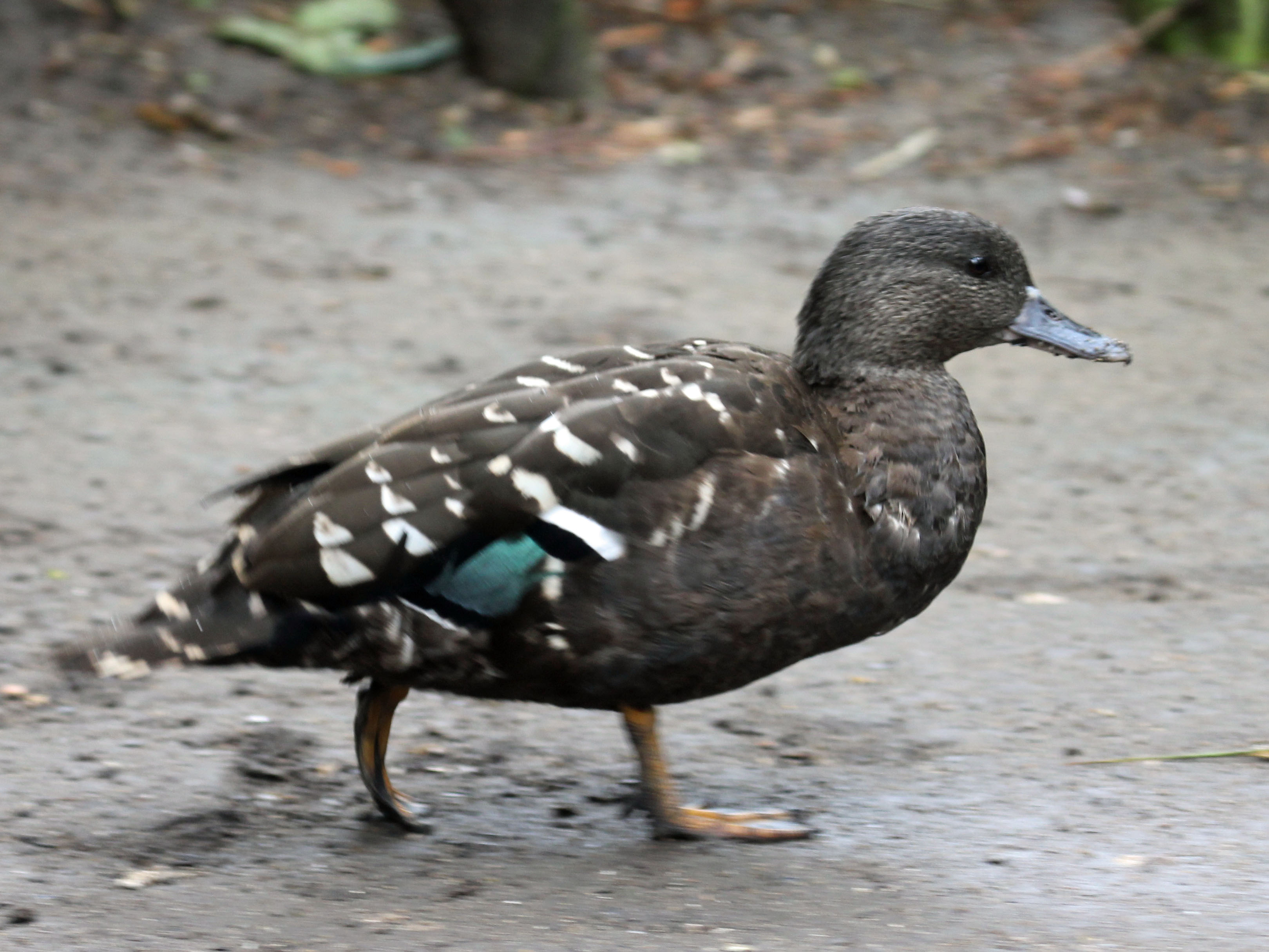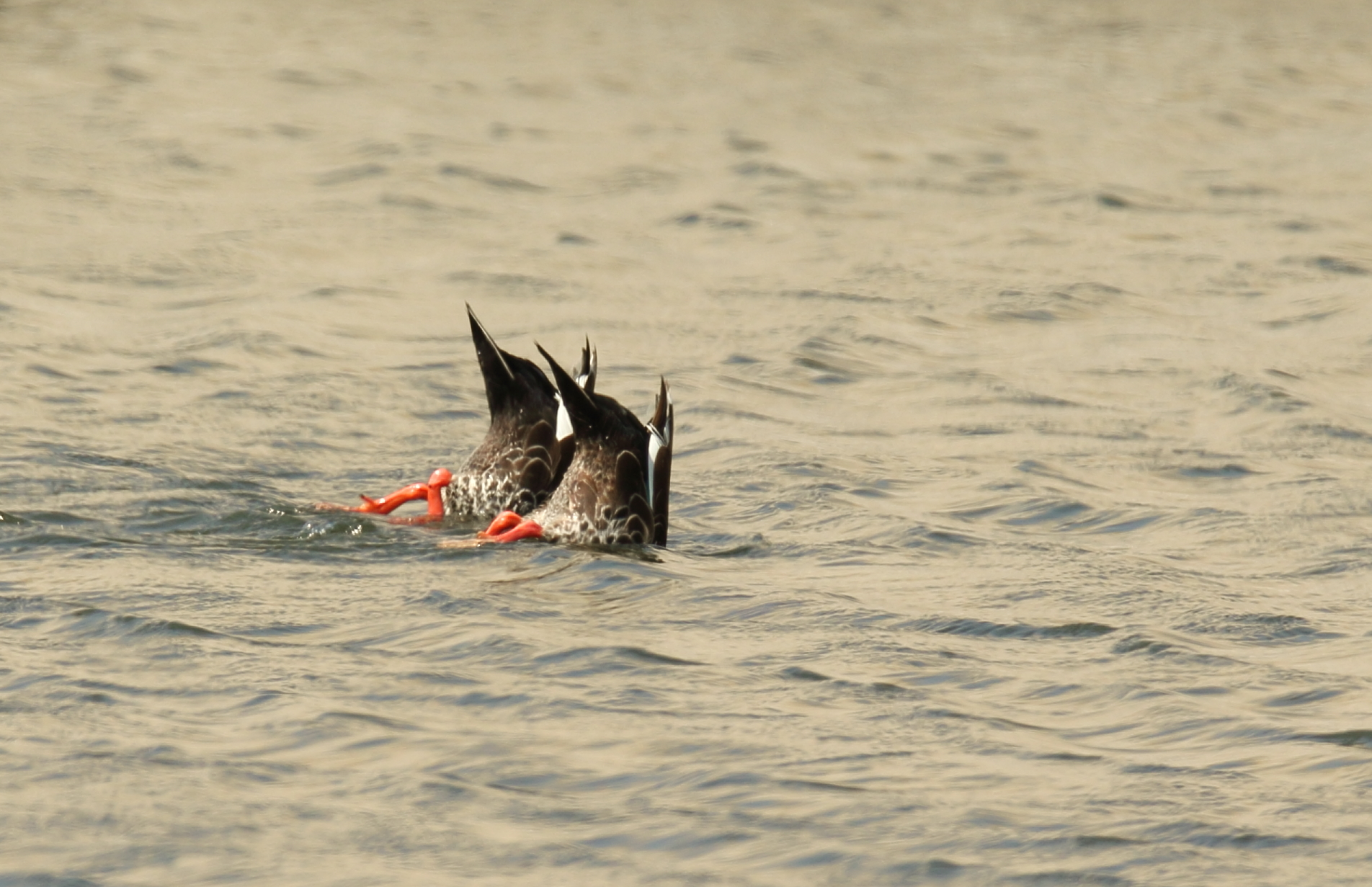|
Niceforo's Pintail
Niceforo's pintail (''Anas georgica niceforoi'') is an extinct subspecies of the yellow-billed pintail (''Anas georgica''), a duck in the dabbling duck subfamily Anatinae The Anatinae are a subfamily of the family Anatidae (swans, geese and ducks). Its surviving members are the dabbling ducks, which feed mainly at the surface rather than by diving. The other members of the Anatinae are the extinct moa-nalo, a youn .... One of three subspecies, it was found in central Colombia but became extinct in the 1950s, being last seen in 1952. Description Niceforo's pintail was darker and richer in colouration than the nearest other subspecies, the Chilean pintail ''A. g. spinicauda'', with the head and neck more streaked, the crown dark brown and with a less pointed tail. Distribution The former range of included subtropical and temperate zones of north-central Colombia, 1000–3000 m above sea level in the upper Cauca Valley, the central part of the Cordillera Oriental, the Bogota ... [...More Info...] [...Related Items...] OR: [Wikipedia] [Google] [Baidu] |
Alexander Wetmore
Frank Alexander Wetmore (June 18, 1886 – December 7, 1978) was an American ornithologist and avian paleontologist. He was the sixth Secretary of the Smithsonian Institution. Early life and education The son of a Country Physician, Frank Alexander Wetmore was born in North Freedom, Wisconsin. Developing an interest in birds at an early age, he made his first field journal entry (a pelican seen while on vacation in 1894) at the age of eight. By 1900, Wetmore published his first paper "My Experience with a Red-headed Woodpecker," in the magazine Bird-Lore. To further his education Wetmore enrolled at the University of Kansas in 1905. During his studies there he did a stint as an assistant in the University Museum, under the direction of Charles D. Bunker. Alexander Wetmore later received his BA from the University of Kansas in 1912; finally receiving his MS in 1916 & PhD in 1920 from George Washington University. Wetmore began federal service in 1910, working for the Biological ... [...More Info...] [...Related Items...] OR: [Wikipedia] [Google] [Baidu] |
Cordillera Oriental (Colombia)
The Cordillera Oriental ( en, Eastern Ranges) is the widest of the three branches of the Colombian Andes. The range extends from south to north dividing from the Colombian Massif in Huila Department to Norte de Santander Department where it splits into the Serranía del Perijá and the Cordillera de Mérida in Venezuelan Andes. The highest peak is Ritacuba Blanco at in the Sierra Nevada del Cocuy. Geography The western part of the Cordillera Oriental belongs to the Magdalena River basin, while the eastern part includes the river basins of the Amazon River, Orinoco River, and Catatumbo River. Within it, the Altiplano Cundiboyacense and the Sierra Nevada del Cocuy (with the only snowy peaks in this mountain range) stand out. The mountain range contains the most páramos in the world. Protected areas * Cueva de los Guácharos * Chingaza National Natural Park * Yariguíes National Park * Sierra Nevada del Cocuy * Sumapaz Páramo * Tamá National Natural Park * Los Estoraques Uni ... [...More Info...] [...Related Items...] OR: [Wikipedia] [Google] [Baidu] |
Birds Described In 1946
Birds are a group of warm-blooded vertebrates constituting the class Aves (), characterised by feathers, toothless beaked jaws, the laying of hard-shelled eggs, a high metabolic rate, a four-chambered heart, and a strong yet lightweight skeleton. Birds live worldwide and range in size from the bee hummingbird to the ostrich. There are about ten thousand living species, more than half of which are passerine, or "perching" birds. Birds have whose development varies according to species; the only known groups without wings are the extinct moa and elephant birds. Wings, which are modified forelimbs, gave birds the ability to fly, although further evolution has led to the loss of flight in some birds, including ratites, penguins, and diverse endemic island species. The digestive and respiratory systems of birds are also uniquely adapted for flight. Some bird species of aquatic environments, particularly seabirds and some waterbirds, have further evolved for swimming. Birds ... [...More Info...] [...Related Items...] OR: [Wikipedia] [Google] [Baidu] |
Birds Of The Colombian Andes
Birds are a group of warm-blooded vertebrates constituting the class Aves (), characterised by feathers, toothless beaked jaws, the laying of hard-shelled eggs, a high metabolic rate, a four-chambered heart, and a strong yet lightweight skeleton. Birds live worldwide and range in size from the bee hummingbird to the ostrich. There are about ten thousand living species, more than half of which are passerine, or "perching" birds. Birds have whose development varies according to species; the only known groups without wings are the extinct moa and elephant birds. Wings, which are modified forelimbs, gave birds the ability to fly, although further evolution has led to the loss of flight in some birds, including ratites, penguins, and diverse endemic island species. The digestive and respiratory systems of birds are also uniquely adapted for flight. Some bird species of aquatic environments, particularly seabirds and some waterbirds, have further evolved for swimming. Bird ... [...More Info...] [...Related Items...] OR: [Wikipedia] [Google] [Baidu] |
Extinct Birds Of South America
Extinction is the termination of a kind of organism or of a group of kinds (taxon), usually a species. The moment of extinction is generally considered to be the death of the last individual of the species, although the capacity to breed and recover may have been lost before this point. Because a species' potential range may be very large, determining this moment is difficult, and is usually done retrospectively. This difficulty leads to phenomena such as Lazarus taxa, where a species presumed extinct abruptly "reappears" (typically in the fossil record) after a period of apparent absence. More than 99% of all species that ever lived on Earth, amounting to over five billion species, are estimated to have died out. It is estimated that there are currently around 8.7 million species of eukaryote globally, and possibly many times more if microorganisms, like bacteria, are included. Notable extinct animal species include Dinosaur, non-avian dinosaurs, Machairodontinae, sab ... [...More Info...] [...Related Items...] OR: [Wikipedia] [Google] [Baidu] |
Anas
''Anas'' is a genus of dabbling ducks. It includes the pintails, most teals, and the mallard and its close relatives. It formerly included additional species but following the publication of a molecular phylogenetic study in 2009 the genus was split into four separate genera. The genus now contains 31 living species. The name ''Anas'' is the Latin for "duck". Systematics The genus ''Anas'' was introduced by the Swedish naturalist Carl Linnaeus in 1758 in the tenth edition of his '' Systema Naturae''. ''Anas'' is the Latin word for a duck. The genus formerly included additional species. In 2009 a large molecular phylogentic study was published that compared mitochondrial DNA sequences from ducks, geese and swans in the family Anatidae. The results confirmed some of the conclusions of earlier smaller studies and indicated that the genus as then defined was non-monophyletic. Based on the results of this study, ''Anas'' was split into four proposed monophyletic genera with five ... [...More Info...] [...Related Items...] OR: [Wikipedia] [Google] [Baidu] |
Cauca River
The Cauca River () is a river in Colombia that lies between the Occidental and Central cordilleras. From its headwaters in southwestern Colombia near the city of Popayán, it joins the Magdalena River near Magangue in Bolivar Department, and the combined river eventually flows out into the Caribbean Sea. It has a length of to its junction with the Magdalena, for a total length of . from origin to seamouth. The river is under the supervision of the ''Cauca Regional Corporation'' and the ''Cauca Valley Regional Autonomous Corporation'', and is navigable for above its junction with the Magdalena. File:Rio cauca popayan.JPG File:Salvajina.jpg File:Río Cauca. Puente Anacaro (3). Cartago - Ansermanuevo, Valle, Colombia.JPG File:Río Cauca.JPG File:Puentes en La Pintada 01.jpg File:Puente de Occidente.JPG File:El río Cauca.jpg Environmental issues On November 18, 2007, Colombian newspaper '' El Tiempo'' reported that the river was receiving an average of 500 tons of residual was ... [...More Info...] [...Related Items...] OR: [Wikipedia] [Google] [Baidu] |
José Ignacio Borrero
José Ignacio Borrero (1921–2004) was a Colombian ornithologist. He was a professor in the Department of Biology at the University of Valle at Cali Santiago de Cali (), or Cali, is the capital of the Valle del Cauca department, and the most populous city in southwest Colombia, with 2,227,642 residents according to the 2018 census. The city spans with of urban area, making Cali the second .... He is commemorated in the name of the possibly extinct Borrero's Cinnamon Teal (''Anas cyanoptera borreroi''). References * (In Spanish) * (In Spanish) 1921 births 2004 deaths Colombian ornithologists 20th-century Colombian zoologists BORRERO H., J. I. 1955. Apuntes sobre aves colombianas (Nº 2). Lozania, Acta Zoológica Colombiana 9:1-15. BORRERO H., J. I. 1958. Aves de Caza Colombianas, Parte Anatidae. Rev. Universidad Nacional de Colombia 23:111-188. BORRERO H., J. I. 1962. Notas varias sobre Asio ammeus bogotensis en Colombia. Rev. Biol. Trop. 10(1):45-59 ... [...More Info...] [...Related Items...] OR: [Wikipedia] [Google] [Baidu] |
Chilean Pintail
The Chilean pintail (''Anas georgica spinicauda''), also known as the golden peck duck or brown pintail, is a subspecies of the yellow-billed pintail (''Anas georgica''), a duck in the dabbling duck subfamily Anatinae. Its local names are ''pato jergón grande'', ''pato maicero'' and ''pato piquidorado'' in Spanish, and ''marreca-parda'' or ''marreca-danada'' in Portuguese. Distribution and habitat The Chilean pintail is one of three subspecies of the yellow-billed pintail, and by far the most numerous and widespread. It is found throughout much of South America from extreme southern Colombia southwards to Tierra del Fuego, as well as in the Falkland Islands. The two other subspecies are the smaller South Georgia pintail which is limited to the subantarctic island of South Georgia and which is sometimes considered a separate species, and the extinct Niceforo's pintail, which occurred formerly in central Colombia. Chilean pintails inhabit freshwater lakes, rivers, marshes, lagoons ... [...More Info...] [...Related Items...] OR: [Wikipedia] [Google] [Baidu] |
Anatinae
The Anatinae are a subfamily of the family Anatidae (swans, geese and ducks). Its surviving members are the dabbling ducks, which feed mainly at the surface rather than by diving. The other members of the Anatinae are the extinct moa-nalo, a young but highly apomorphic lineage derived from the dabbling ducks. There has been much debate about the systematical status and which ducks belong to the Anatinae. Some taxonomic authorities only include the dabbling ducks and their close relatives, the extinct moa-nalos. Alternatively, the Anatinae are considered to include most "ducks", and the dabbling ducks form a tribe Anatini within these. The classification as presented here more appropriately reflects the remaining uncertainty about the interrelationships of the major lineages of Anatidae (waterfowl). Systematics The dabbling duck group, of worldwide distribution, was delimited in a 1986 study to include eight genera and some 50–60 living species. However, Salvadori's teal is ... [...More Info...] [...Related Items...] OR: [Wikipedia] [Google] [Baidu] |

.jpg)
.jpg)


